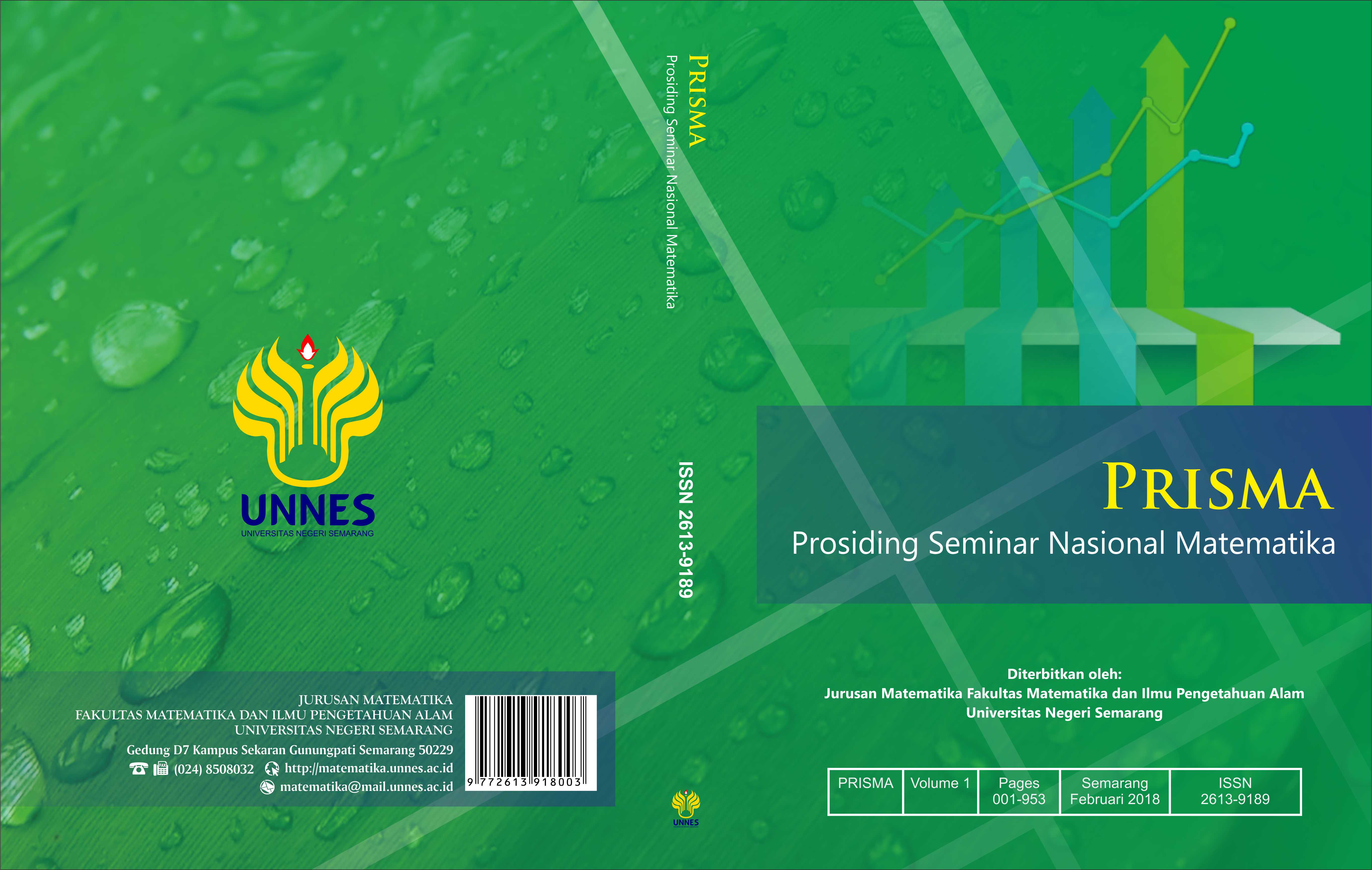Pengungkapan Koneksi Matematis Sebagai Sarana Penelusuran Kemampuan dan Proses Memecahkan Masalah Peserta Didik
Main Article Content
Abstract
Ada banyak teori cara menumbuhkan kemampuan dan proses memecahkan masalah, misalnya menurut Polya, Krulick & Rudnick, Zalina, atau Tambychik. Permasalahannya, bagaimana menelusuri kemampuan dan proses memecahkan masalah peserta didik melalui soal-soal Koneksi Matematis? Tujuannya, untuk menelusuri kemampuan dan proses memecahkan masalah peserta didik melalui soal-soal Koneksi Matematis Kegiatan pokoknya: Pemberian soal-soal yang bersifat pemecahan masalah dan memuat koneksi matematis. Pengerjaannya: (1) reading and understanding, (2) organizing strategy, (3) solving the problem, (4) confirmation of the process, dan (5) confirmation of the answer. Metodenya dengan pendekatan kualitatif. Hasilnya: (1) Proses dan kemampuan memecahkan masalah peserta didik, kecenderungannya berada di atas KKM. (2) Tidak ada resonden yang berkategori Sangat Baik. Dua siswa berkategori Baik, tiga siswa berkategori Cukup, dan satu siswa berkategori Kurang. Saran yang dapat direkomendasikan: Perlu ada latihan soal bersifat pemecahan masalah dan mengoneksikan dengan materi pelajaran lain.
Article Details
References
Botty, H et al. 2016. The Implementation of Problem Based Learning (PBL) in a Year 9 Mathematics Classroom: A Study in Brunai Darussalam. Macrothink Institute – International Research and Education. ISSN 2327-5499 Vol. 4 No. 2.
Burns, Marilyn (Editor Neil Davidson). 2002. The Math Solution: Using Groups of Four – Cooperative Learning in Mathematics. California: Addison Wesley.
Cañadas, Maria C, et al. 2009. Using a Model to Describe Students’ Inductive Reasoning in Problem Solving. Electronic Journal of Research in Educational Psychology. ISSN. 1696-2095. No. 17. Vol. 7. Pp 261-278.
Caesar et al. 2016. Thee Benefits of Adopting a Problem-Based Learning Approach on Students’ Learning Developments in Secondary Geography Lessons. International Education Studies; Vol. 9, No. 2; 2016. ISSN 1913-9020 E-ISSN 1913-9039. Published by Canadian Centerof Science and Education.
Das, Kumer Pial. 2011. Reading and Mathematics connection: English Language Learner Students’ Perspective. Journal of Mathematical Sciences & Mathematics Education. Vol. 3 No. 2.
Herman, Tatang. 2000. Strategi Pemecahan Masalah (Problem-Solving) dalam Pembelajaran Matematika. Makalah Disajikan dalam Kegiatan Asistensi Guru Madrasah Ibtidaiyah dan Tsanawiyah Jawa Barat Tanggal 28 September s.d. 3 Oktober 2000. Kerja sama ITB dengan Depag RI.
Karso. 2000. Dasar-dasar Pendidikan MIPA. Jakarta: Dirjen Dikdasmen – Bagian Proyek Penataran Guru SLTP Setara D III.
Krulick, S. & Rudnick, J.A. (1996). Reasoning and Problem Solving: A Handbook for Elementary School Teacher.Boston: Allyn & Bacon.
Miles, Matthew & Huberman, A. Michael. 1992. Analisis Data Kualitatif. Terjemahan Rohidi, Tjetjep Rohendi. Jakarta: Penerbit UI.
Moleong. Lexy L. 2010. Metodologi Penelitian Kualitatif (Edisi Revisi). Bandung: PT. Remaja Rosdakarya Offset.
National Council of Teachers of Mathematics (NCTM). (2000). Principles and Standards for School Mathematics. Tersedia di www.nctm.org.
National Council of Teachers of Mathematics (NCTM). (1989). Curriculum and Evaluation Standards for School Mathematics, Reston, Virginia: NCTM.
Polya, George. (1985). How to Solve It? 2nd. New Jersey: Princeton University Press.
Polya, G. (1981). Mathematical Discovery on Understanding Learning and Teaching Problem Solving.NewYork: John Wiley and sons.
Salout, Shirin Soltani et al. 2013. Students' Conception about the Relation of Mathematics to Real-Life. Mathematics Education Trends and Research 2 of 7 http://www.ispacs.com/journals/metr/2013/metr-00009/.
Selçuk, G.S, Çalişkan, S, & Erol, Mustafa. 2007. The Effects of Gender and Grade Levels on Turkish Physics Teacher Candidates’ Problem Solving Strategies. Journal of Turkish Science Education. Volume 4, Issue 1, May 2007.
Suyitno, Amin. 2006. Dasar-Dasar dan Proses Pembelajaran Matematika. Semarang: FMIPA UNNES.
Tambychik, Tarzimah. 2010. Students’ Difficulties in Mathematics Problem-Solving: What do they Say? International Conference on Mathematics Education Research 2010 (ICMER 2010). Procedia Social and Behavioral Sciences 8 (2010) 142–151: Elsevier.
Taplin, Margaret. 2015. Teaching Mathematics through a Problem-solving Approach. www.mathgoodies.com/articles/problem_solving.html by M Taplin - ‎Cited by 37 - ‎Related articles.
Wiederhold, Chuck W. 1998. Cooperative Learning & Higher Level Thinking. San Clemente: Kagan Cooperatine Learning.
Zaini, Hisyam. 2002. Strategi Pembelajaran di Perguruan Tinggi. Yogyakarta: CTSD (Center for Teaching Staff Development).
Zalina Mohd Ali & Norlia Nain (2005). Kajian Kemahiran Berfikir dan Menyelesaikan Masalah bagi Topik Nombor. Pengintegrasian Matematik dalam Pengurusan: Teori dan Amalan Prosiding Simposium Kebangsaan Sains & Matematik ke XIII, Jilid 1. 312– 317.
